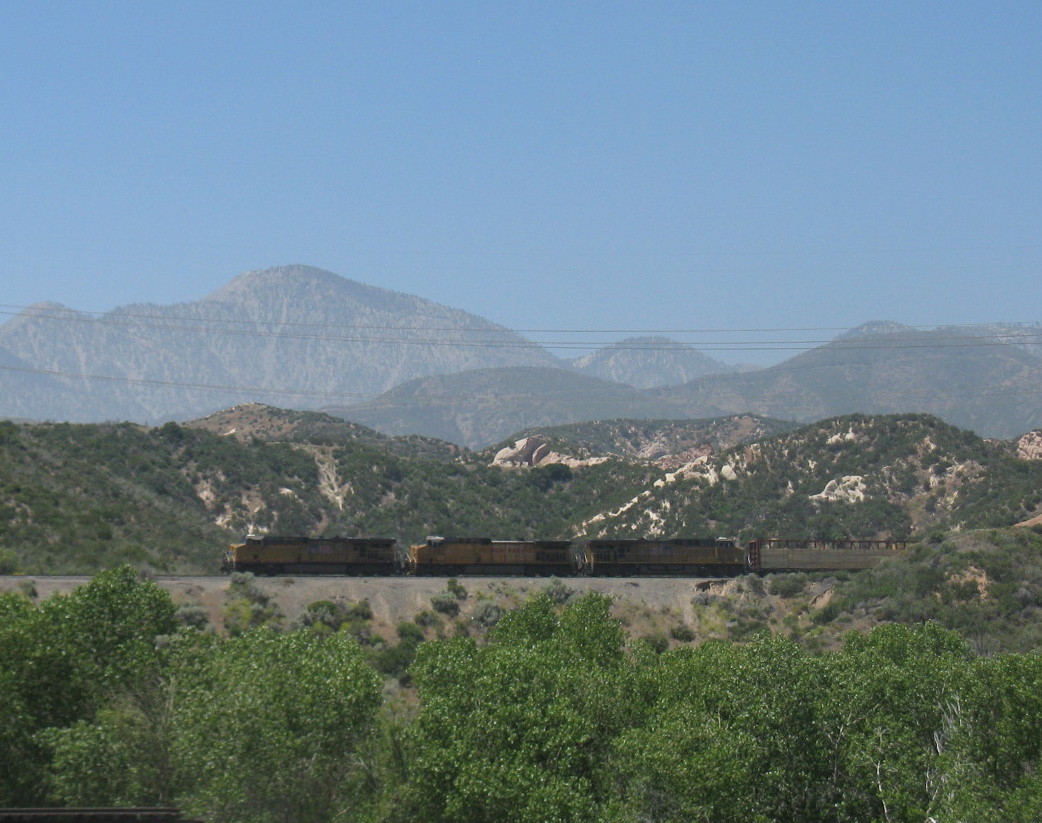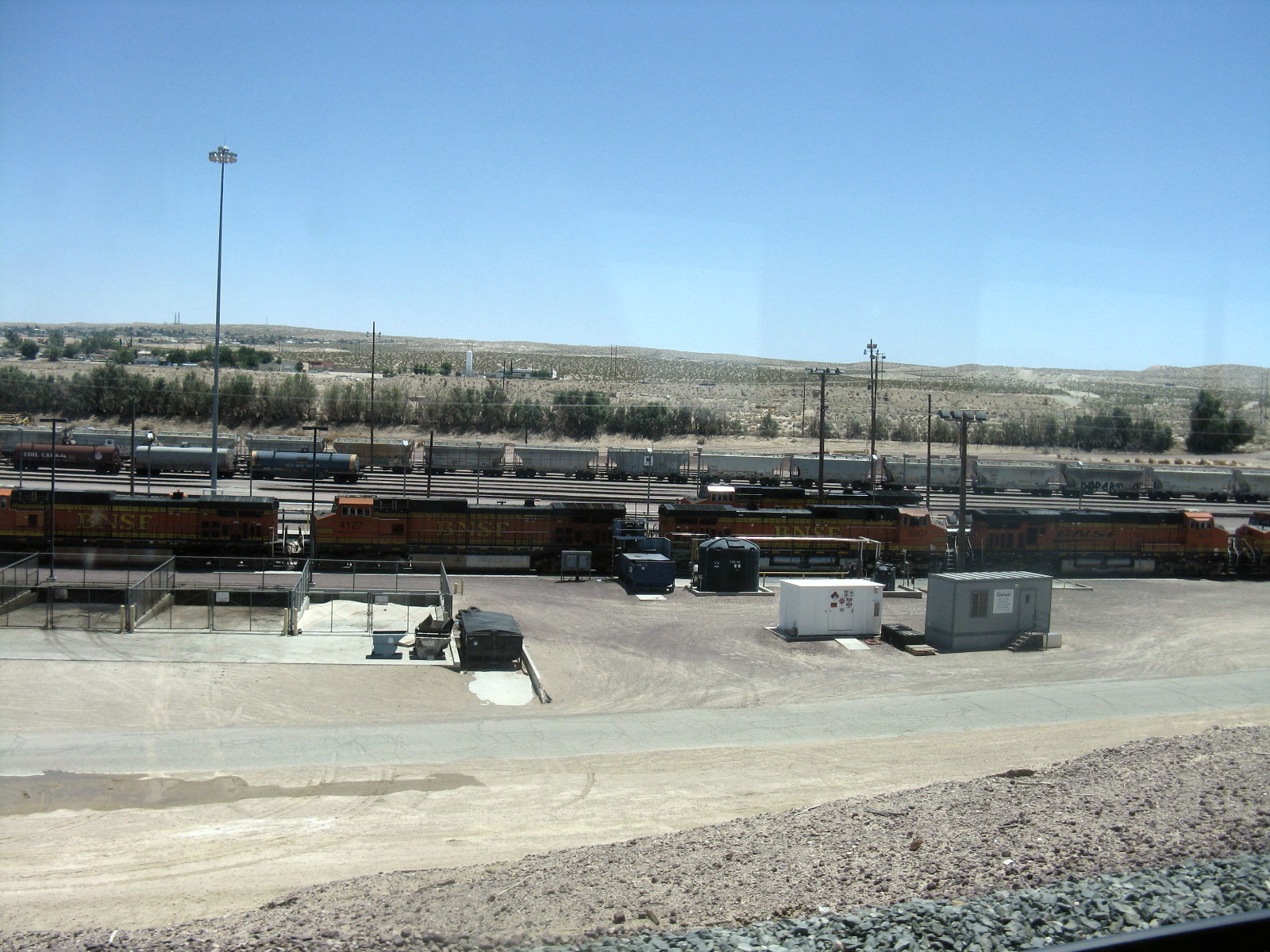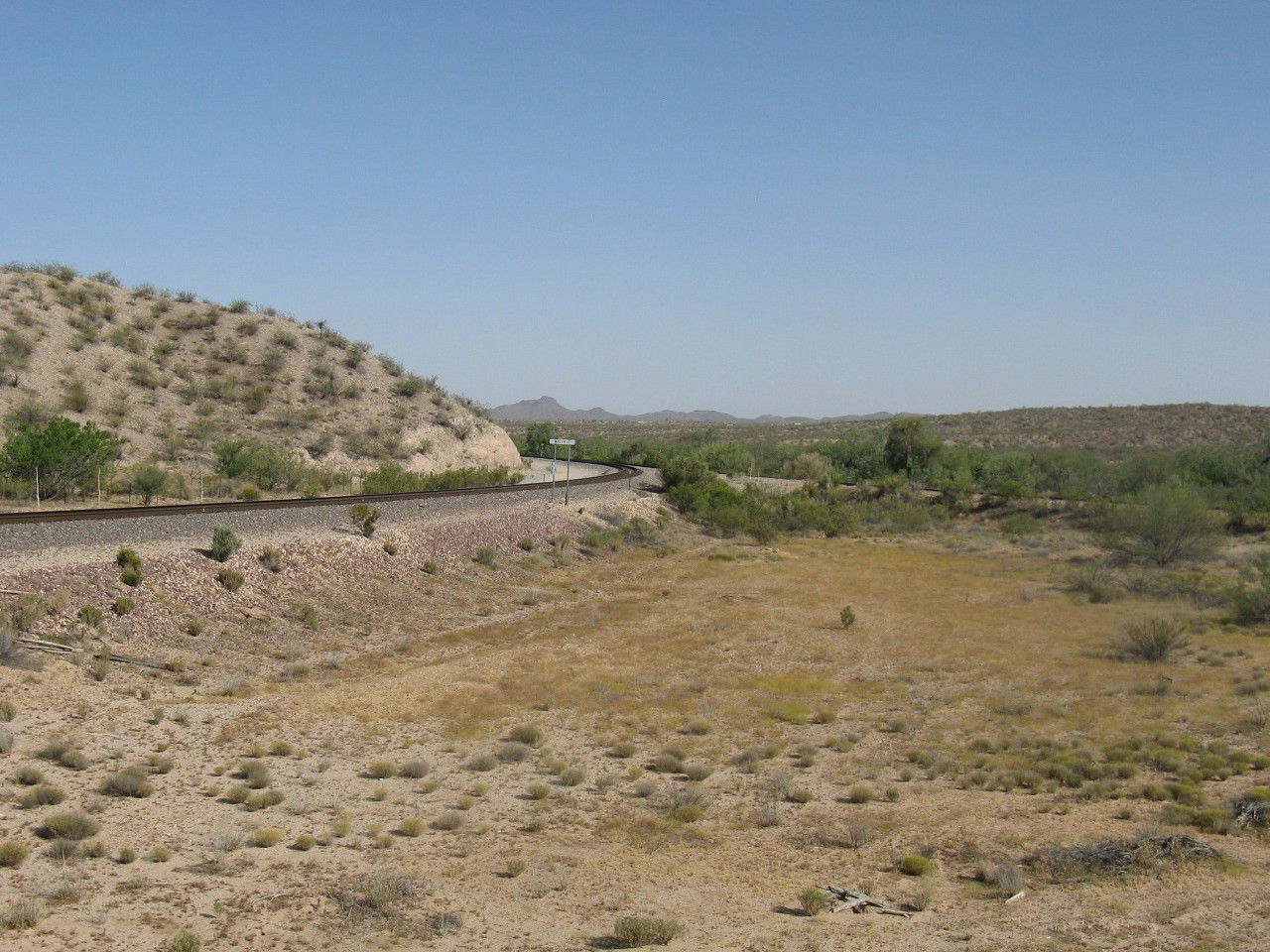Grand Canyon Limited 2012
Part II:
Los Angeles to Williams AZ
By Peter Limper
| Passengers prepared to board the Grand Canyon Limited on the morning of May 14. |
| A view from my coach seat toward the rear of the train as it departed Los Angeles. |
| Near the terminal is this apparently still-operational turntable, with the towers of down-town Los Angeles in the background. |
| The first stop after Los Angeles was San Bernardino (aka “San Berdoo”) where the engine was serviced and watered and more passengers boarded. |
| Commuter trains waited at San Bernardino for their next trip to Los Angeles. |
| 3751 left San Bernardino in a cloud of steam. |
| A high point (literally and figuratively) of the first day’s trip was the climb up famed Cajon Pass. |
 |
| In addition to the BNSF, the Union Pacific operates trains through Cajon Pass. |
 |
| The Cajon area features rugged mountains and distinctive rock formations. |
| Our train approached Summit, which is at MP 55.9. |
 |
| Cajon is a favorite location for railfans and photographers, though there are now numerous fences and other barriers to block access to the tracks. |
| Past Summit, the train began the long decent toward Barstow. |
| As in ATSF days, Barstow is the site of a major locomotive service site. |
 |
 |
| Barstow has a substantial station in a Spanish Colonial style. |
 |
| Amtrak officials in charge of the train tried to keep through passengers from detraining even during lengthy service stops, but I was able to get permission from a car host to get off briefly to take a few pictures from the platform. |
| I was not allowed to approach the locomotive, however; limited access to 3751 was a source of frustration during much of the trip. |
| After leaving Barstow, the train entered the BNSF Needles Subdivision and began a long trek through the Mojave Desert. |
| Although mostly barren, the Mojave has some distinctive vegetation. |
| Passengers on Tolani napped as the desert landscape passed by. |
| At Cadiz, junction with the Arizona and California Railroad, the engine was serviced and we were passed by a BNSF train made up mainly of refrigerated trailers on flats. |
 |
| After a lengthy delay to clear a train coming off the A&C, we started down that line toward Parker, AZ. |
| Unfortunately, the A&C had failed to perform and document a federally mandated track inspection to allow passenger operation at “normal” speeds, so we were held to15 to 25 mph over most of their line. |
| Although we were scheduled to arrive at Parker at 8:30 PM, sunset found us far from our destination; we finally arrived after midnight. |
| The next morning I got a brief view of my motel in daylight before rejoining the train for a 9:30 departure. |
| On Tuesday morning we finally had an opportunity for a photo run-by at the small town of Bouse, which displayed a miniature tank (behind the truck, center) to greet us. |
 |
| The train backed up for the run-by, and 3751 steamed past the grade crossing. |
 |
| Photographers waited for the train to back up for re-boarding. |
| After 80 more miles of slow running on the A&W, we re-joined the BNSF at this wye at Matthie Junction. |
 |
| At Congress the train made another service stop and boarded passengers who came by bus from Phoenix. |
| The train continued in the setting sun. Once again the arrival at Williams was several hours later than the scheduled 7PM. |
This page was designed and is maintained by Mike Condren.
If you have materials
that you would like to contribute, contact me at mcondren@cbu.edu